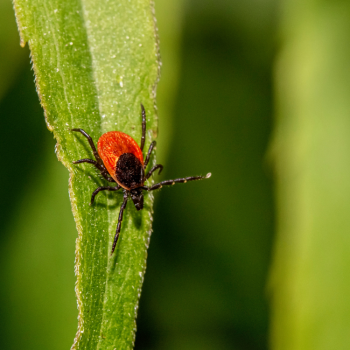SNC Reminds Residents to Be Aware of Ticks this Summer

As warmer temperatures settle in, so do the prevalence of ticks in the region.
South Nation Conservation (SNC) would like to remind residents and visitors to be vigilant when outdoors and take precautions against tick bites to reduce the risk of Lyme disease and other tick-borne illnesses while enjoying nature.
Lyme disease and similar illnesses can result from bites by infected blacklegged ticks, commonly known as deer ticks, potentially leading to severe infections. Although not every tick carries disease, the blacklegged (deer) tick is common within SNC’s jurisdiction in Eastern Ontario and carriers of the disease cannot be distinguished from non-carriers.
“With summer approaching, we are thrilled to see more people enjoying their local environment,” said John Mesman, SNC’s Managing Director of Conservation Lands. “Staying on designated public trails can help reduce potential interactions with ticks, however, it’s important that everyone takes steps to protect from tick bites.”
Symptoms of Lyme disease, such as fever, headache, chills, muscle and joint pain, fatigue, and a circular rash resembling a bull's eye should prompt immediate consultation with a healthcare provider.
The risk of tick bites increases when residents, visitors, and their pets are outside in wooded areas, or areas with tall grass and shrubs. The risk is not only for those living in a rural setting. Ticks can be found anywhere, including suburban and city locations.
“Blacklegged ticks are continuing to spread to new areas in Ontario,” explained Dr. Paul Roumeliotis, Medical Officer of Health, Eastern Ontario Health Unit (EOHU). “By being vigilant, wearing appropriate clothing and regularly checking for ticks, we can help prevent tick-borne illnesses so that everyone can safely enjoy trips outdoors.”
SNC and the EOHU encourage the following protective measures when outdoors:
1) Wear light-coloured clothing for easy tick detection.
2) Wear long sleeve shirts, pants tucked into socks, and closed-toed shoes when outdoors,
especially in wooded or tall grass areas.
3) Apply insect repellent containing DEET or Icaridin to exposed skin and clothing.
4) Check yourself, children, and pets for ticks after being outdoors.
If bitten by a tick, carefully remove the tick as soon as possible. Infected blacklegged ticks need to be attached for at least 24 hours to transmit the bacteria that causes Lyme disease.
Ticks can be removed with a clean, fine point tweezer: grasps the head as close to the skin as possible and slowly pull it out, without twisting. Wash the bite area with soap and water or an alcohol-based sanitizer. Consult the following guide for more information: Lyme disease: How to remove and identify a tick.
As of January 2023, pharmacists are now able to prescribe antibiotics to treat tick bites to prevent Lyme disease, as a precaution. Please consult your doctor if you are concerned of an infection associated with a tick bite.
Please visit the EOHU website for more information on ticks and Lyme disease in Eastern Ontario: www.eohu.ca/lyme
FOR MORE INFORMATION: Erin Thorne, SNC Communications Specialist, 1-877-984-2948 ethorne@nation.on.ca.

